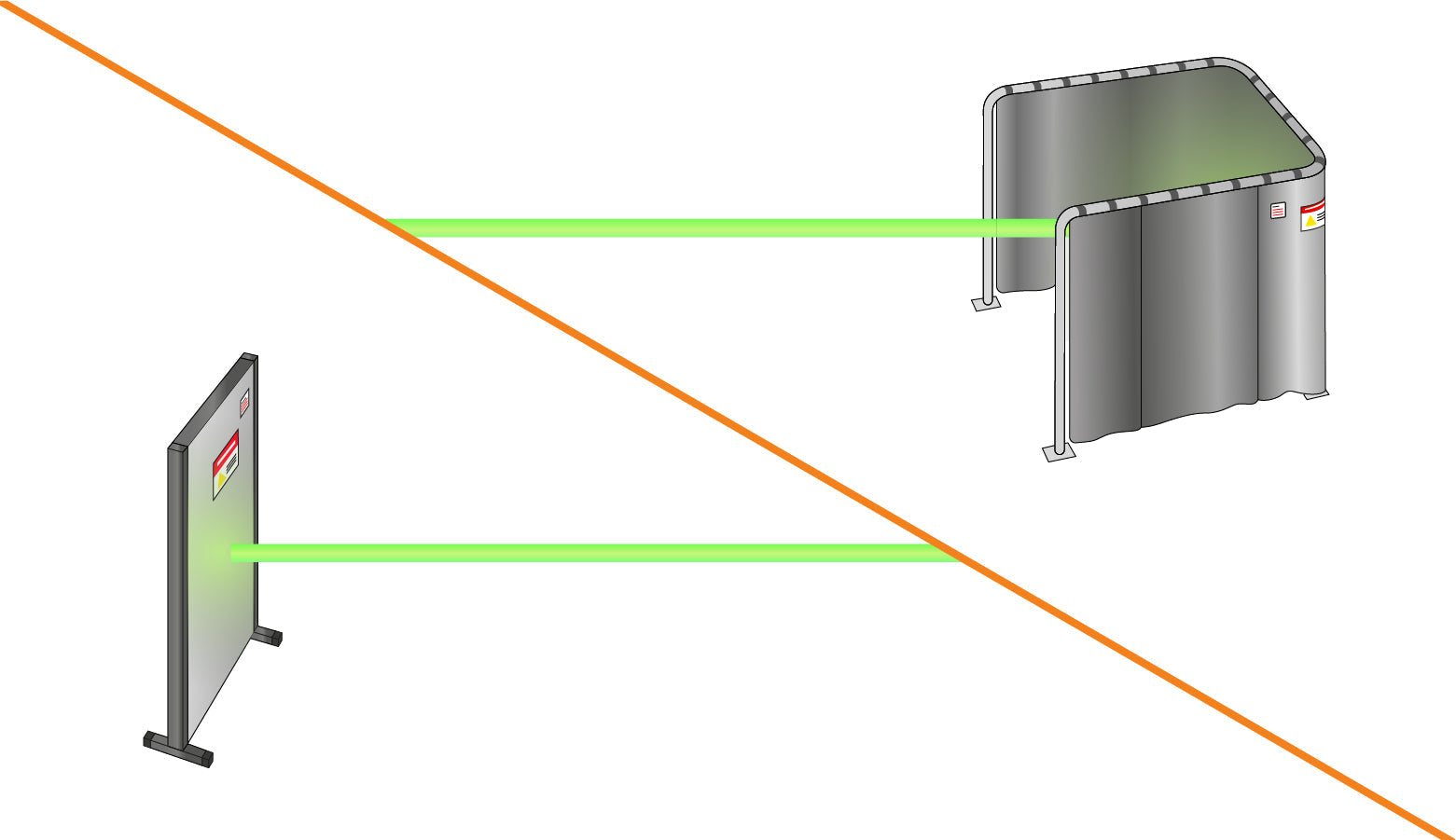Choosing the Right Laser Barrier or Curtain
When selecting a laser safety solution, it is important to understand your specific hardware needs and the level of protection required. This guide focuses on two key areas: the differences between 575W and 625W barriers and curtains and hardware options. We also off a 2500W/cm^2 @1080nm tested with a beam size of 3mm for 100 seconds, see here. The 2500W/cm^2 is fundamentally a different setup and material then the 200W and 300W Barriers and curtains
575W and 625W Barriers and Curtains
The primary difference between 575W and 625W barriers and curtains lies in their maximum irradiance capability and their purpose in practice:
-
Maximum Irradiance: These barriers and curtains withstand 575W/cm² or 625W/cm² tested with a beam size of 4.25mm for up to 100 seconds.

Misconception Alert: A common misconception is that a 1500W laser requires a 1500W barrier or curtain solution. This is most often not true (although all situations are different). In practice, your laboratory or laser set-up is designed to contain diffused laser radiation, not direct hits. However, we test them with a direct hit for 100 seconds. For more information on laser safety practices, see our Class 4 Laser Safety Guide. We included an image below to demonstrate the difference between a direct hit and diffused laser radiation.

Our systems are meant to contain scattered or diffused laser energy effectively, ensuring safe working conditions around the laser setup. The following image generally illustrates the concept of how irradiance decreases with increasing distance from the point of diffusion:

Key Considerations
- Material and Cost: Higher wattage curtains and barriers use an additional layer of material, which increases the cost per square foot.
Hardware Options
Curtains
Laser safety curtains are a fixed solution designed to block or contain laser radiation in a defined area. If the curtain is to attach to a wall, a peelback adhesive strip is used. They can be configured using:
- Velcro Attachments: Ideal for static installations where reconfiguration is minimal but still adjustable as needed.
- Grommets: Allow curtains to slide easily, making them suitable for use as doors or for areas requiring frequent access.
If the curtain is to attach to a wall, a peelback adhesive strip can be used. If desired, a divider can be applied to connect or re-configure any laser barrier system.

Both the velcro and grommets options provide flexibility and can be mounted to free-standing poles, walls, or ceilings depending on your space requirements.
Barriers
Barriers offer a mobile alternative to curtains. These systems are ideal for applications where the safety solution needs to be repositioned frequently, or you don't want the system to be a fixture of the room. Options include:
- Casters (Wheels): Provide easy mobility for reconfiguring spaces.
- Stand-Alone: Stationary solutions for areas where movement is not required. Unlike curtain systems, which become fixtures of the room, stand-alone barriers are still moveable but do not have wheels.
Both options can be easily daisy-chained together with dividers we provide, which are often 1 foot wide however can be sewn to any width. This enables you to create a system that can go around corners and be custom-made to fit your specific situation. To be clear, we in-house are sewing and anything is possible. We do custom work with our laser safety material all of the time.
Installation Made Simple
Installing our laser safety barriers and curtains is intuitive and efficient. A professional maintenance person can typically set up the system in just 15 to 30 minutes. All necessary metal hardware is included with your purchase, ensuring a seamless installation process.
For the hard wall collapsible barrier it comes assembled in the crate ready to be unfolded.
While we provide a complete solution, it's worth noting that many welders opt to purchase only the curtains or barriers and fabricate their own hardware to meet specific needs.
We provide expert consultations to help you determine:
- What laser barrier or curtain is appropriate for your application.
- The hardware setup that best suits your needs.
Contact us today to get started with your laser safety solution.



